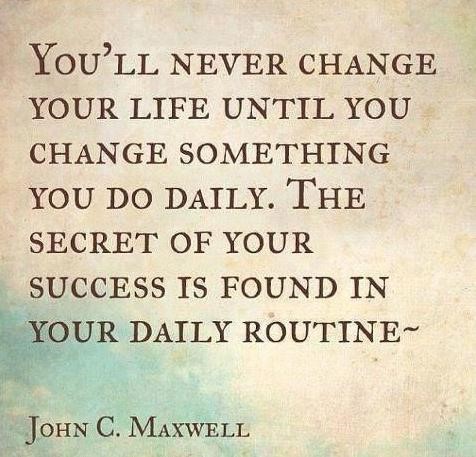5 Strategies to Break Bad Habits (5 minutes)
 1) Change your Environment
1) Change your Environment
Do you remember the CNN story of the American GIs in Viet Nam who were addicted to heroin? Remember how their addictions dramatically decreased once they came back to the US? This was largely due to the change in their environment. Of course, this is an extreme case, but the factor of environment is strong and can be applied in many settings.
Take, for example, Anne Thorndike, a physician with Massachusetts General Hospital. She noticed how unhealthy the food was at Mass General and she wanted to do something about it to encourage health. She didn’t want to ban junk food, but she did want to see a change, so she asked herself how she could amend the environment to encourage more healthy behaviors in the hospital.
What Thorndike proposed was to adjust how the food and beverages were displayed in the hospital. Originally, there were 3 beverage fridges, all filled with soda. She had water bottles added to the fridges as well as baskets of water bottles placed throughout the room. In just 90 days, the number of soda sales decreased by 11.4 percent and bottled water sales increased by 25.9 percent.
Are there things you can do in your environments that can discourage unhealthy habits?
2) Understand the Why
Many times, we are motivated to stop a bad habit, but we don’t ask the question: Why? A key factor in successfully kicking a bad habit is understanding your motivation to kick the habit in the first place. Is it coming from your parents’ desire? Societal norms? A spouse’s wish? If these are true, it will be much more difficult to successfully kick the habit. If you really want to change something, it should be something you really want, not something you feel like you should do. So if you find yourself in the “should” camp, is there a way you can authentically move it to the “want” camp? If not, you might consider kicking a different habit.
3) Visualize Effectively
Visualizing can be an effective technique to support the breaking of bad habits. However, research has demonstrated that it’s important to be aware of how, exactly, you’re visualizing, because some methods are more effective than others. First off, fantasizing about a world in which the bad habit is kicked without any plan, motivation or action can actually be more damaging than simply continuing the bad habit. What happens is it weakens your ability to connect desire to action for this event and for future events.
Another thing to think about when visualizing is what, specifically, it is that you’re visualizing. According to this study from UCLA, visualizing the process rather than the goal was much more powerful. For example, rather than visualizing yourself next summer at the beach with washboard abs, visualize yourself getting in the car after work and heading to the gym. This reframing from outcome to process is also empowering in that we are investing energy into the specific steps we need to take to achieve the goal rather than simply focusing on the pathless goal, which can increase anxiety and support a feeling of disempowerment.
4) Eliminate “Ah-Screw-Its”
The blogger, Derek Halpern coined this phrase and what he means by it is that there will be moments, especially in the first couple weeks, where the behavior change won’t feel worth it and you’ll be tempted to throw in the towel. This is because new habits are fragile and the prevailing patterns are well-tread. There are lots of triggers that will encourage old patterns and the desire to say “ah-screw-it” will be strong. What’s needed when this feeling emerges isn’t more willpower, but strategy. Determine exactly where the process is breaking down and invest your energy on repairing it.
Below is an example by author, Ramit Sethi, who explains how he improved his gym attendance by discovering the moment things broke down:
When I sat down to analyze why I wasn’t going to the gym, I realized: my closet was in another room. That meant I had to walk out in the cold [to] put on my clothes. It was easier to just stay in bed. Once I realized this, I folded my clothes and shoes the night before. When I woke up the next morning, I would roll over and see my gym clothes sitting on the floor. The result? My gym attendance soared by over 300%.
5) Create a Commitment Device
Psychologists use the term ‘Commitment Device’ to refer to a strategy that helps us improve our behavior by either artificially increasing obstacles or costs of bad behavior and/or artificially incentivizing good behavior. For example, imagine you and your friend are making a commitment to exercise for at least 30 minutes 3 days a week. Now imagine you’re a big Red Sox fan and your friend is a Yankees fan (if you’re not aware, they are arch rivals). A “commitment device” you and your friend could instill would be that if either person misses a day, that person has to wear the opposing team’s hat for a week. This commitment device could be substituted with making a donation to a cause one is adamantly against or giving the other person a certain amount of money. Whatever it is, it should be motivating.
A note here is that commitment devices can make the commitment to the new behavior more fun and exciting, but research has not demonstrated any significant correlation with between commitment devices and breaking bad habits.

